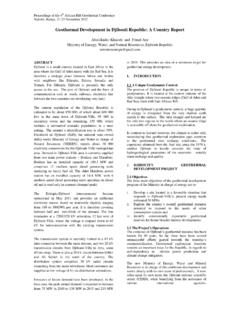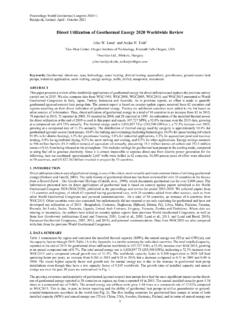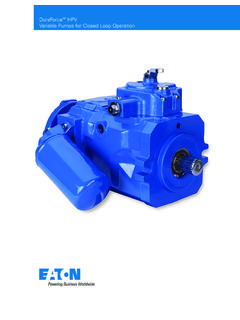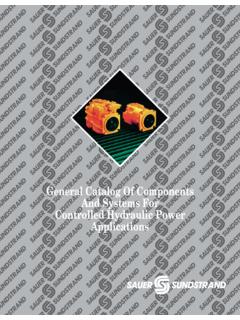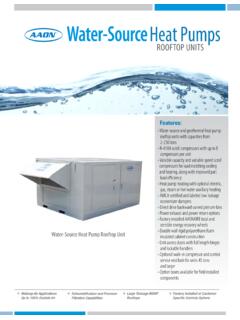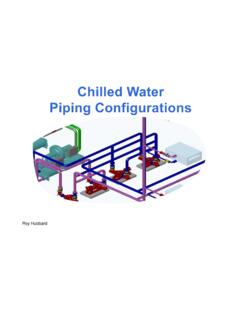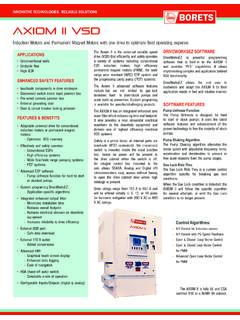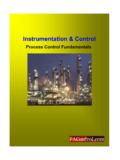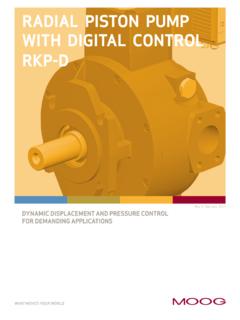Transcription of DESIGN OF CLOSED-LOOP GEOTHERMAL HEAT …
1 John Lund: DESIGN OF CLOSED-LOOP GEOTHERMAL heat EXCHANGERS IN THE OF CLOSED-LOOP GEOTHERMAL heat EXCHANGERS IN THE byJohn W. LundGeo- heat CenterE-mail: INTRODUCTIONG eothermal heat pumps (aka ground-source heat pumps) (GHP or GSHP) areused in two basic modes: ground coupled(vertical or horizontal) closed loop, orgroundwater types open loop (Figure 1and 2). The installation and use of geo-thermal heat pumps worldwide have had alarge increase over the past ten years atalmost 10% annually. Most of this growthhas occurred in the United States andEurope, though interest is developing inother countries such as Japan and Turkey(see Geo- heat Center Quarterly Bulletin,Vol.)
2 22, No. 1, March, 2001). At the begin-ning of 2000 the worldwide installedcapacity in 27 countries was 6,875 MWt andthe annual energy use was 23,287 TJ/yr(Lund, 2001a). The actual number of ins-talled units is around 500,000, but the dataare incomplete. The equivalent number of12 kW units installed is slightly over570,000. The 12 kW ( tons) equivalent isused as typical of homes in the United Statesand some western European countries. Thesize of individual units, however, range kW (Poland and Sweden) for residentialuse to large units over 150 kW (Germanyand the United States) for commercial andinstitutional installations (Sanner, 2001).
3 In the United States, most units are sizedfor the peak cooling load and are oversizedfor heating (except in the northern states)and, thus, are estimated to average only1,000 full-load heating hours per year (ca-pacity factor of ). In Europe most unitsare sized for the heating load and are oftendesigned to provide just the base load withpeaking by fossil fuel. As a result, theseunits may operate from 2,000 to 6,000 full-load hours per year (capacity factor of ). An average value for Europeancountries is approximately 2,200 full-loadhours per year (Rybach and Sanner, 1999;Sanner 2001).In the United States, GEOTHERMAL heatpump installations have steadily increasedover the past 10 years with an annual growthrate of about 12%, mostly in the mid-International Course on GEOTHERMAL heat PUMPS_____2western and eastern states from NorthDakota to Florida.
4 Today there are an esti-mated 500,000 units (12 kW equivalent)installed with 50,000 installed annually. Ofthese 46% are vertical closed loop, 38%horizontal closed loop and 15% open loopsystems (Lund, 2001). Projections for thefuture are that the growth rate will increaseabout 12% annually, so that by 2010 anestimated 140,000 new units would beinstalled in that year, thus, adding almostone million units for a total of about units. Over 600 schools have install-led these units for heating and cooling, espe-cially in a Coefficient of Performance (COP) of and 1,000 full-load hours peryear in the heating mode, the 500,000 equi-valent units remove approximately 16,200TJ/yr from the ground.
5 The cooling modeenergy is not considered GEOTHERMAL , sincethis rejects heat to the ground; however, thecooling mode does replace other forms ofenergy and is, thus considered in fossil fueland greenhouse gases emission savings. Itshould be noted at this point, that in theUnited States, heat pumps are rated ontonnage ( , one ton of cooling power produced by a ton of ice) is equivalent to12,000 Btu/hr or 1. Ground-coupled ( CLOSED-LOOP ) 2. Groundwater (open-loop) converts to this form of energysa-vings is U. S. President George W. Bush,who recently installed a 49 kW closed loopgeothermal heat pump on his Texas general introduction to geothermalheat pumps can be found in Lund (2001b).
6 Horizontalverticaltwo welldirectpondJohn Lund: DESIGN OF CLOSED-LOOP GEOTHERMAL heat EXCHANGERS IN THE : closed LOOPSYSTEMSThe following presentation is a sum-mary of material (with the appropriate unit con-versions) presented in Ground-Source HeatPumps -- DESIGN of GEOTHERMAL Systems forCommercial and Institutional Buildings byStephen P. Kavanaugh and Kevin Rafferty, andpublished by the American Society of Heating,Refrigeration and Air-Conditioning Engineers,Inc., (ASHRAE) Atlanta, GA (1997), and in Earth-Source heat exchanger for HeatPumps by Harry J. Braud, James Oliver andHenry Klimkowski, and published in the Geo- heat Center Quarterly Bulletin, Vol.
7 11, No. 1,Summer, stated in Chapter 3 of Kavanaugh andRafferty (1997) on Fundamentals of VerticalGround heat exchanger DESIGN : The DESIGN of vertical ground heatexchangers is complicated by the variety ofgeological formations and properties that affectthermal performance. Proper identification ofmaterials, moisture content, and water move-ment is an involved process and cannot beeconomically justified for every project. There-fore, the necessary information for complexanalysis is usually unavailable. A more prudentdesign approach is to apply empirical data to asimple solution of heated (or cooled) pipes placein the ground.
8 The thermal properties can beestimated by using values for soils in aparticular group and moisture content that ischaracteristic of local conditions. This method has proved successful forresidential and light commercial permanent change in the local groundtemperature may be expected for systems withlarge annual differences between the amount ofheat extracted (heating mode) and the amountrejected (cooling mode). This problem iscompounded in commercial systems where earthheat exchangers are more likely to be installedin close proximity because the available groundarea is more limited. Two schools of thought are that the maxi-mum and minimum ground temperatures maytake several years to occur depending on theamount of heat extracted or rejected to theground (Claesson and Eskilson, 1987).
9 This isespecially true for multiple boreholes close toeach other, as the worst case condition mayoccur several years after installation. Thus, inthis case, the DESIGN should consider the longterm performance. On the other hand, Kava-naugh (1984) suggests that detailed simulationsfor a great many years is unnecessary. He feelsthat an estimate of the annual net amount issufficient for accurate determination of perfor-mance as variations in heat transfer are dampedby the large thermal mass of the groundsurrounding the OF THUMBR ules of thumb that is often used for theinitial planning and cost estimate in the (Kavanaugh and Gilbreath, 1995; Rafferty,2001).
10 1. 150 to 200 feet/ton (13 to 17 m/kW) forvertical loops2. Approximately 30% to 50% longer forhorizontal loops under the same US$ 750/ton ($213/kW) for horizontalground loop US$1,050/ton ($300/kW) for vertical groundloop US$8,200/ton ($2,330/kW) total installedcost for horizontal system (loop, heat pump,ductwork, etc.)6. US$9,000/ton ($2,560/kW) total installedcost for vertical system (loop, heat pump,ductwork, etc.)7. Typical residence of 2,000 - 2,400 ft2(186 to 223 m2) requires 3 to 4 tons ( kW) of heating supply, depending should be noted at this point, that designof horizontal loops , buried in trenches 4 to 6 feet( to m) deep, are heavily influence bysolar radiation and the number of loops in eachInternational Course on GEOTHERMAL heat PUMPS_____4trench.


